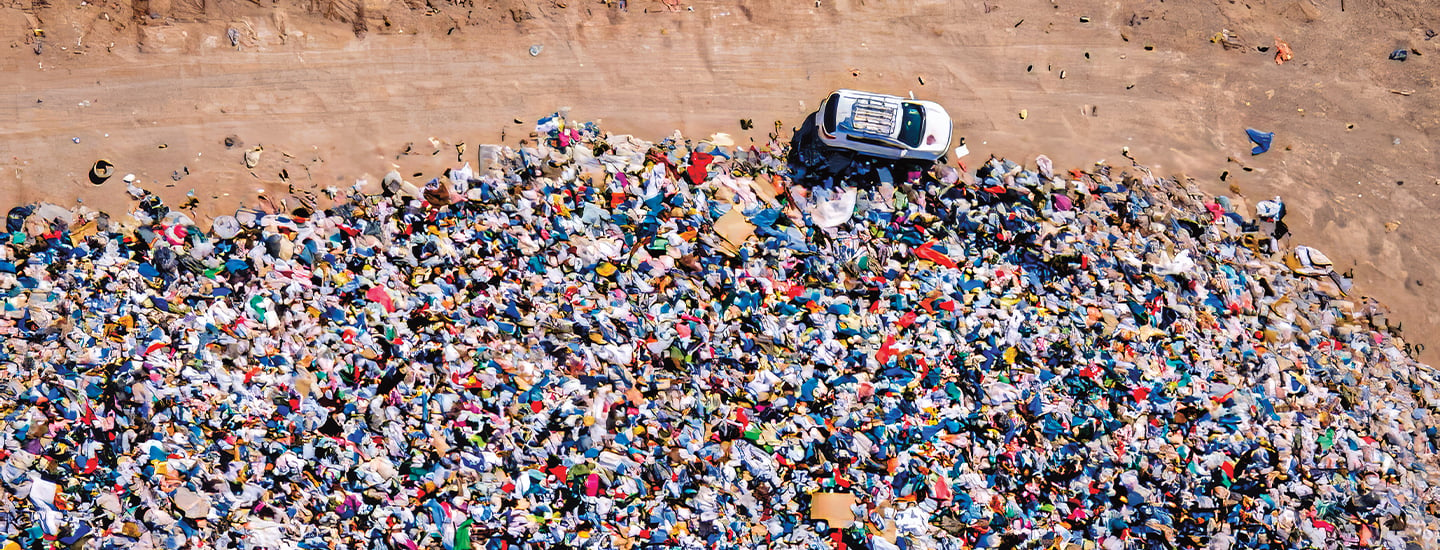Jim McMahon/Mapman®
Among the sand dunes and rocky landscapes of the Atacama Desert in Chile lies a mountain. But this is no natural mountain. It’s a towering heap of sweaters, jackets, and other discarded clothes—and it’s growing at an alarming rate.
Over the past 15 years, the Atacama Desert has become a dumping ground for the world’s fast fashion: trendy clothes that are produced quickly and sold at low prices. Shoppers fill their closets with fast fashion, then toss items as soon as they go out of style. Manufacturers also overproduce garments, discarding what isn’t bought without losing too much cash.
All that trashed clothing has to go somewhere. The United States and other wealthy nations export millions of tons of it overseas, including to Chile. What can’t be resold there ends up in landfills and trash heaps. Since most fast fashion is made from materials that don’t break down naturally, the piles only grow over time.

